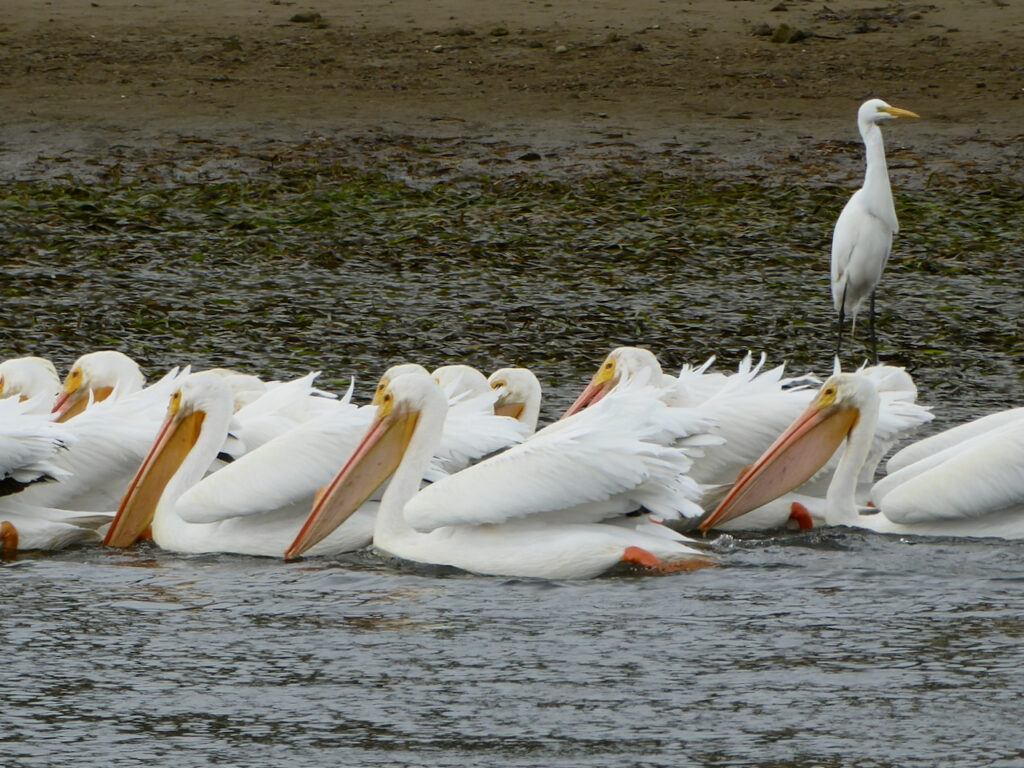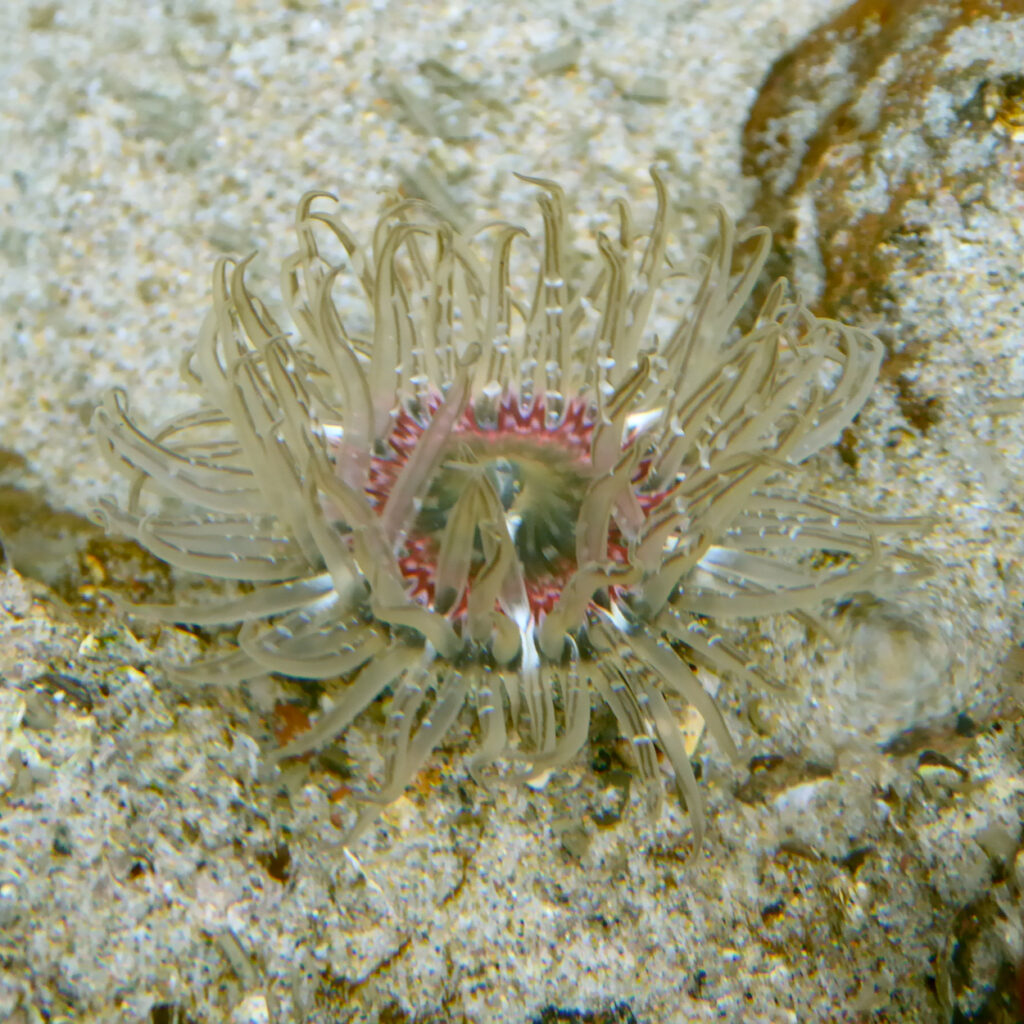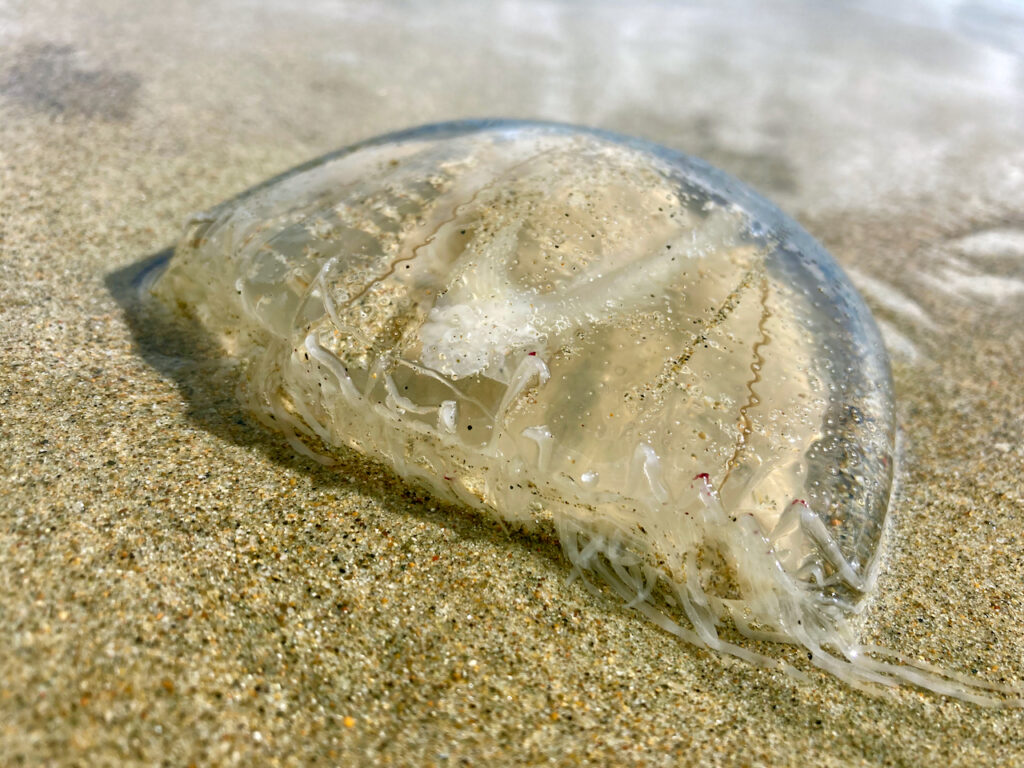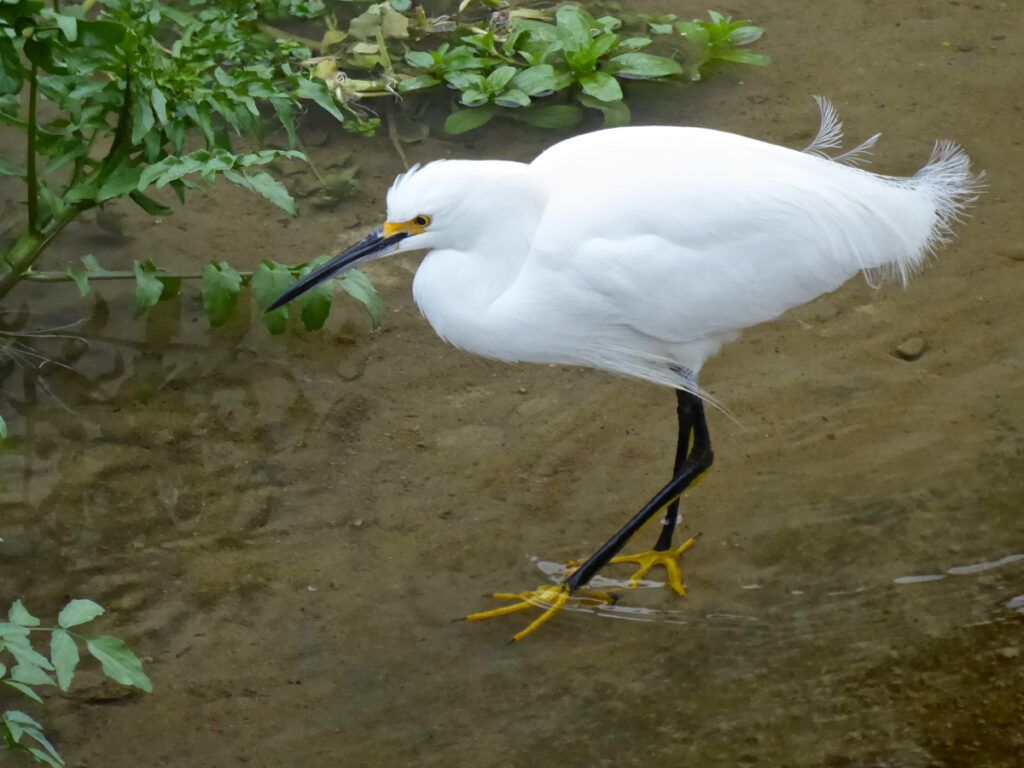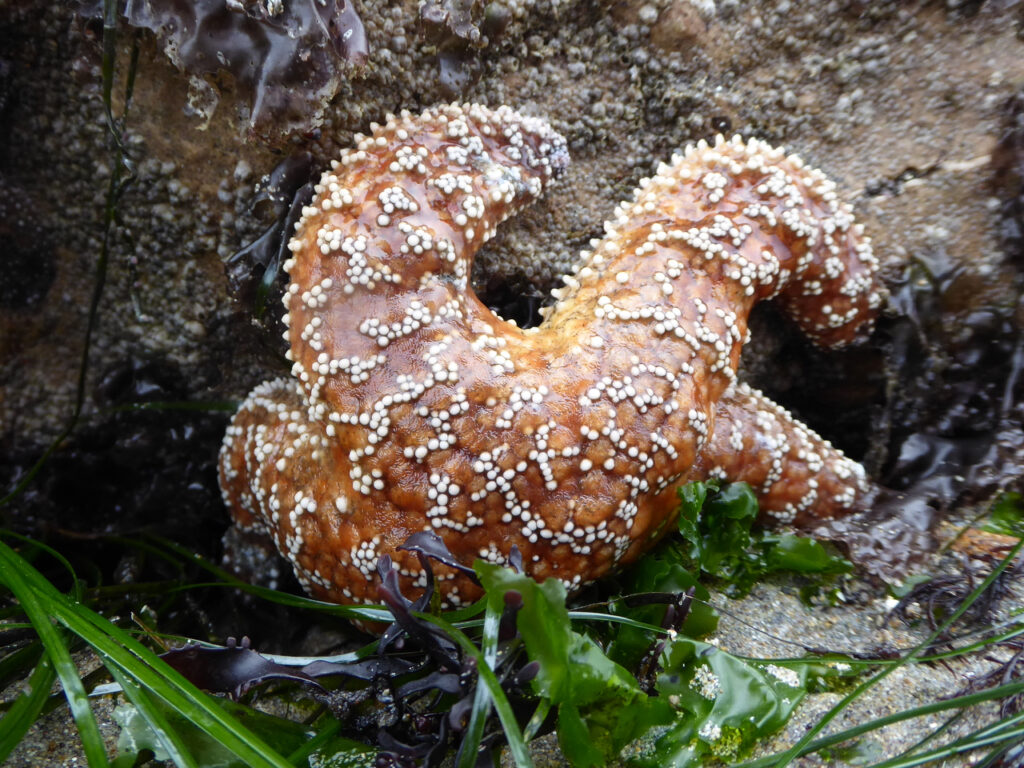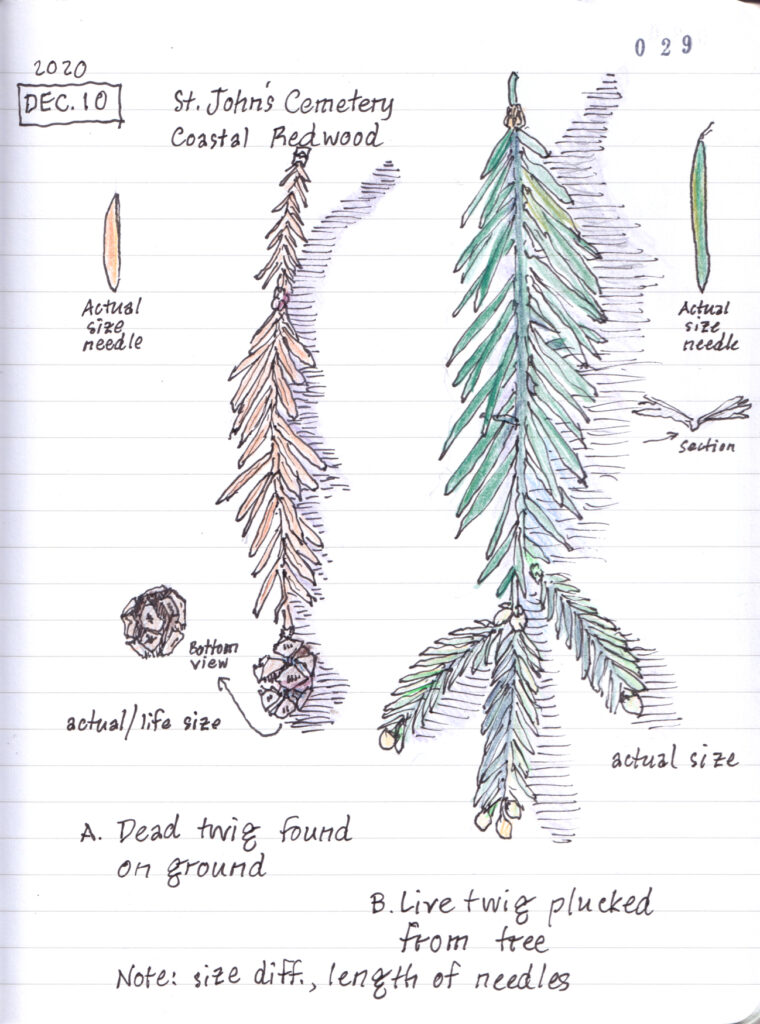What happened here?
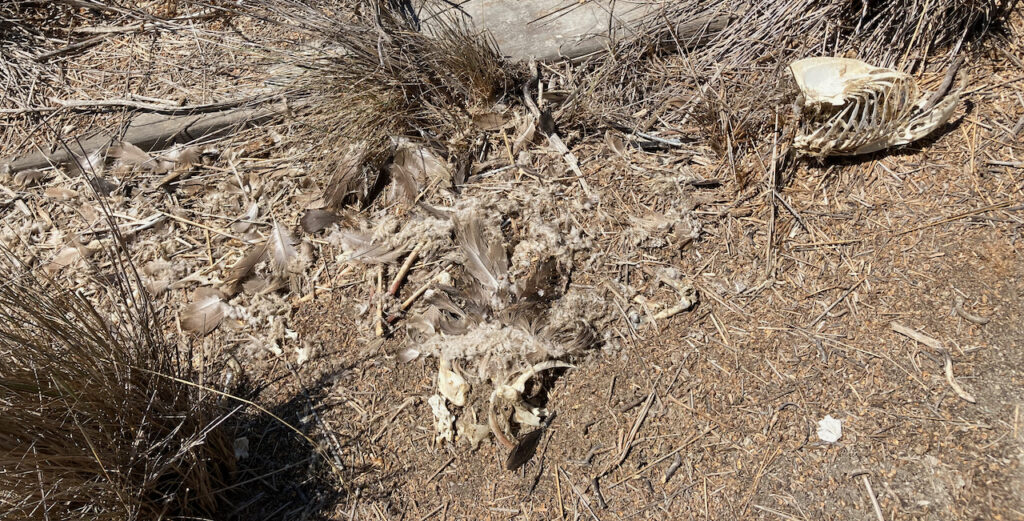
It’s like one of those crime scenes you see in pop culture. Except that instead of human remains, it’s the remains of a bird. I found this on the dike next to Adobe Creek in Palo Alto, right across from the island in the marsh where there’s a California Gull nesting colony. The rib cage in the upper right corner of the photo is big enough to be from a gull — it’s about eight inches long — and check out that huge breast bone for the flight muscles to attach to. The other bones are scattered in the center of the photo, though there appear to be some bones missing. There are lots of feathers — grey feathers characteristic of juvenile gulls.
Before you start mourning the death of a young gull, remember that the mortality rate of young gulls is high. Something on the order of 75% of nestlings die before they develop flight feathers (Patricia Baird, Comparative Ecology of California and Ring-billed Gulls [Larus californicus and L. delawarensis], Ph.D. dissertation, Univ. of Montana, 1976). After the birds learn to fly, but before they move on to winter quarters, mortality rates are on the order of 5%, although in bad years post-fledging mortality rates could be as high as 70% (Kristie N. Nelson, Nora Livingston, and Teague Scott, “Population size and reproductive success of California Gulls at Mono Lake, California,” Point Blue, 2015). In short, perhaps 75-90% of young California Gulls die before they’re six months old. Predators
So it would not be surprising if a juvenile California Gull were killed here. Any number of predators might have killed it — a raptor, a dog off leash, a raccoon, a coyote. But any clues to what the predator was have doubtless been obliterated by the carrion eaters that came along after the predator was finished — Turkey Vultures, American Crows, rats, and other critters must have further scattered the bones and feathers.
About all we can say for certain is that a juvenile gull died here. It died some time after it fledged — California Gull nestlings were fledging beginning about a month and a half ago — but long enough ago that the bones are been picked clean and are now dry and without odor.

